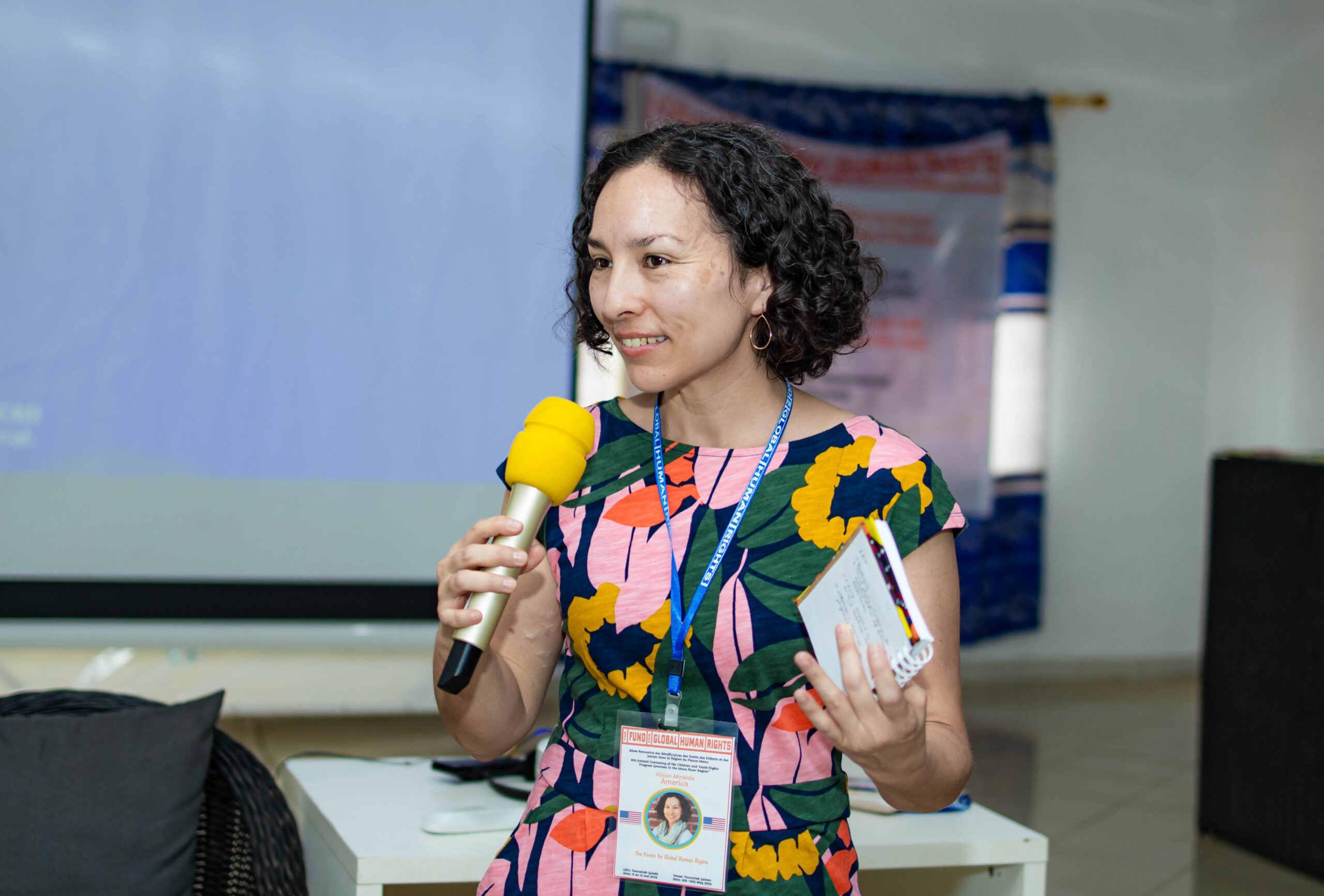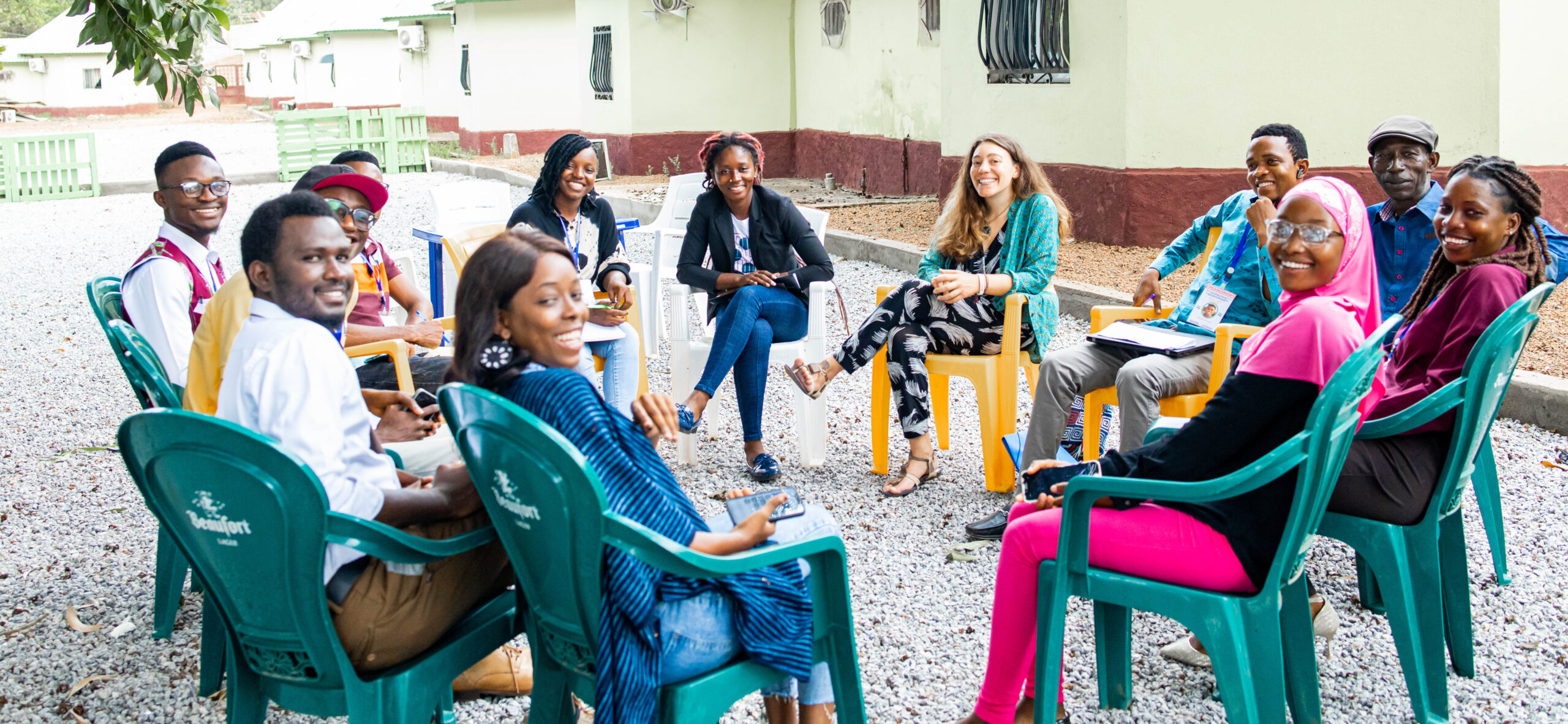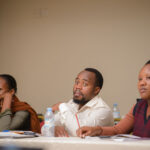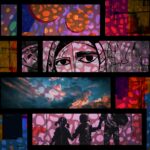Alison Miranda, the Fund’s director of learning and assessment, reflects on the process and practice of developing a learning agenda with a team of young co-researchers from West Africa.

As I was packing my bags to travel home from Forécariah, in southwestern Guinea, I heard laughter, joyful screams, and splashing water before I could see the source of the commotion. During the intense weeklong convening of youth activists from West Africa, our group typically sought relief from the heat under the trees along the riverside. We had been the only group at this venue, so the pool had remained relatively silent during the day—until now.
Grantee partners from youth-led and youth-serving groups across West Africa joined this convening with the Fund’s Children’s and Youth Rights Program (CYP) team. Together, the group explored regional and localized contexts, shared experiences, and contributed to a learning agenda around our central theme: the connections between human rights and youth economic empowerment. There are various approaches we could take to explore this theme. So, why pursue a learning agenda?
Youth voices and experiences shaped the current CYP strategy, which includes a new focus on economic empowerment and livelihoods for young people. As we’ve learned through our pilot participatory grantmaking project in Sierra Leone, the work is enriched when young people play a key role in defining both processes and outcomes. The learning agenda we developed together is intended to use youth-centric experiences in West Africa to build a shared understanding of what we mean by economic empowerment and human rights.

LIVELY-HOODS
Learning Agenda: In Between Youth Livelihoods and Human Rights in West Africa
Starting with purpose is a healthy learning practice. But it is also important to understand what you are working toward. Learning agendas can suffer from unclear explanations—either too vague or too complicated—of what they are. My recipe for a learning agenda is simple, with three key learning ingredients: questions, activities, and products. A learning agenda documents key questions, plans activities to explore those questions, and yields products (including new questions!) to inspire action around those questions.
As with recipes, the process is also where a learning agenda comes to life. After several days of learning sessions, designed and facilitated by Recrear, this learning agenda was certainly coming to life. Through the wisdom of our facilitators, the stories and expertise of participants, and the experiences we shared together in Guinea, several insights emerged.
The participatory nature of our convening helped to surface the humanity of grantee partners’ work amidst the real struggles they face as individuals and organizations. This experiential process brought broad topics—youth livelihoods and human rights—to life. We found both common ground and unique experiences. Such diversity helps to expand rather than oversimplify our understanding of these issues.

A key aspect of our work together involved building, sharing, and listening to stories. In the learning and assessment profession, stories are often used to highlight successes rather than challenges. This convening demonstrated that stories can also be used to name and process exploitation, frustration, and other struggles. Even human rights activists who work to counter these realities may not have many opportunities to pause and reflect, rather than react and respond, to such injustices. Learning from success and setbacks helps to bring nuance to our understanding, even though it may be difficult to hear.
Finally, I started to unravel an assumption I didn’t realize I held: that stories are relics of the past. The convening participants and facilitators demonstrated how stories can be used to hold the past, the present, and even potential future experiences. Through stories, we can appreciate and support the persistence and perseverance of human rights protagonists. And we can envision a better future with the actors in the systems we seek to influence or change.
So, at the conclusion of this intense but fruitful time working together, I was curious to see who was having so much fun. As I approached the pool, I saw dozens of children and young people who came on buses from the area to enjoy a weekend swim. This sudden burst of energy was a perfect way to conclude the week. Their joyful voices carried the sounds and hopes of powerful stories—now and in the future.
Alison Miranda is the Fund’s director of learning and assessment. She leads the Fund’s learning and assessment team to enable values-driven learning and assessment of the Fund’s contribution to change.
Sign up to our newsletter
Add some impact to your inbox.


